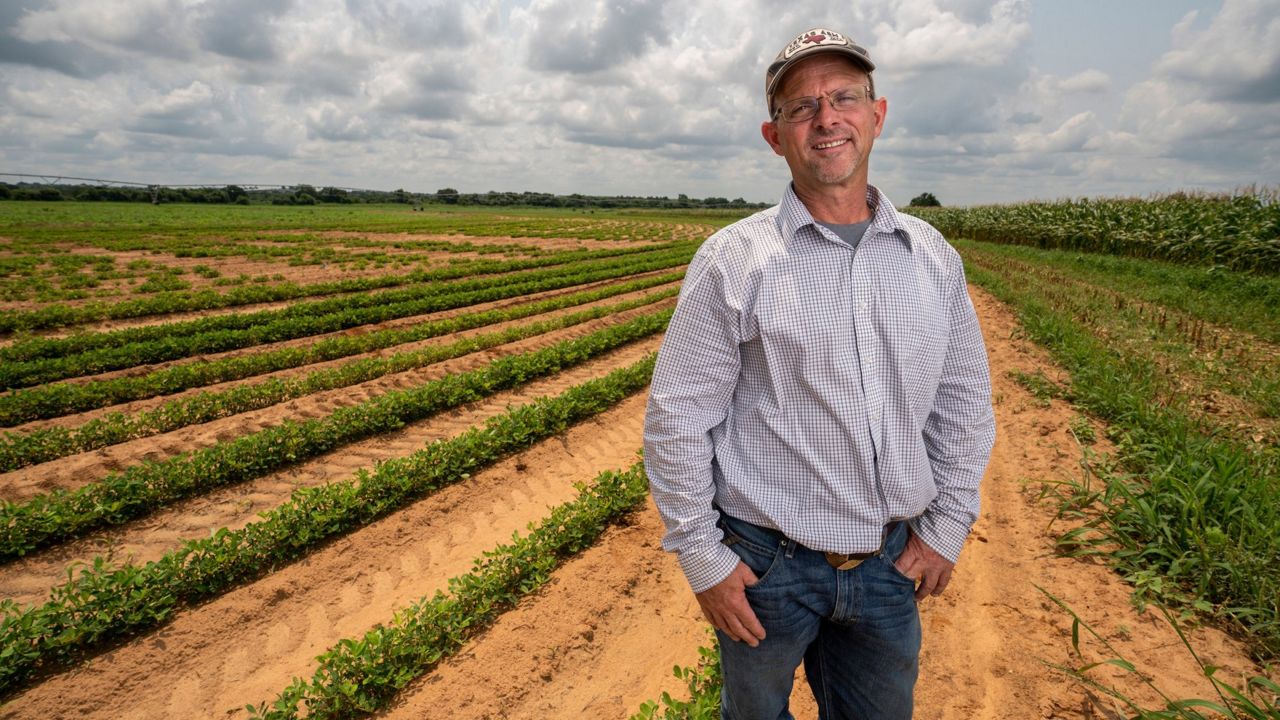BRYAN-COLLEGE STATION, Texas — Texas A&M AgriLife and Chevron are collaborating to develop the “Diesel Nut,” with hopes of returning to the use of peanuts as a renewable source for diesel fuel.
Utilizing peanut oil has a lower carbon intensity, which is the energy used to produce a product and how much net carbon that process adds to the atmosphere. Lower carbon intensity is important in developing sustainable agricultural practices.
Texas A&M Agrilife researcher John Cason will be leading this five-year, multimillion-dollar project to focus on creating low-cost peanut lines for the renewable diesel industry and advancing existing high-oil peanut germplasm.
The collaboration between AgriLife and Chevron will allow the researchers to develop peanuts with higher oil content and ones that are better adapted to dryer climate, according to Texas A&M AgriLife Director Cliff Lamb.
“We hope these new peanut varieties will offer producers a profitable dryland or limited irrigation crop option,” Lamb said. “What makes this project truly exciting is that it takes the entire agricultural value chain into account, using cutting-edge research to create an abundant, affordable and high-quality product that works to protect natural resources, improve health and support economies in Texas and beyond. We appreciate the support of this work by Chevron.”
Chevron plans to produce 100,000 barrels of renewable fuels a day by 2030. Doing so through a renewable source with lower carbon intensity is the company’s priority.\
“Chevron is thrilled to team with Texas A&M AgriLife to work to develop the next generation of renewable fuel feedstocks,” said Michelle Young, renewables program manager for Chevron Downstream Technology and Services. “This collaboration has the potential to deliver high-quality oil to produce renewable fuels while providing peanut farmers in the U.S. with another way to maximize the value of their operations.”
According to Texas A&M AgriLife, food-grade peanuts produce an oil content of approximately 48%, while some high-oil breeding lines have oil content around 55-60%. With those yields, “diesel nuts” would be able to produce nearly 350 gallons of oil per acre, compared to soybean’s current oil yield of about 25-50 gallons per acre.
“We also are developing new crosses and screening Texas A&M AgriLife germplasm, including the wild germplasm collection maintained by Simpson,” Cason said. “Our breeders are searching for germplasm with even higher oil content to develop the most elite cultivars that will also perform in dryland conditions and produce the highest oil content.”
Cason and his team are working on developing the “diesel nut” to be drought tolerant and disease resistant.
“With our edible breeding lines, we’ve also been looking at drought tolerance, but not on any of the lines producing higher oil,” Cason said. “Now we’ve pulled everything out and started planting in Vernon and Stephenville and will grow some under dryland and irrigation. We are treating this year as kind of a pilot year.”
Peanut-planting season in West Texas began in late April and May, while peanuts are planted as late as late June in South Texas. Harvest begins in October and is complete by Thanksgiving. The goal is to develop “diesel nut” lines across Texas and regions in the U.S. that may have limited irrigation and dry conditions.
“The end goal of this project is the commercialization of elite high-oil varieties that producers can plant and oil that Chevron can use,” said Carl Muntean, director of Texas A&M AgriLife Corporate Engagement and Research Support.



